Indoor plants can be an excellent way to bring life and beauty into your home, but it’s easy to become frustrated when they don’t seem to grow as fast as you’d like. Well, I’ve got some good news for you: there are plenty of simple things that you can do to help make your indoor plants flourish! In this article, I’m going to share with you exactly how to make indoor plants grow faster so that you can enjoy their lush greenery in no time at all.
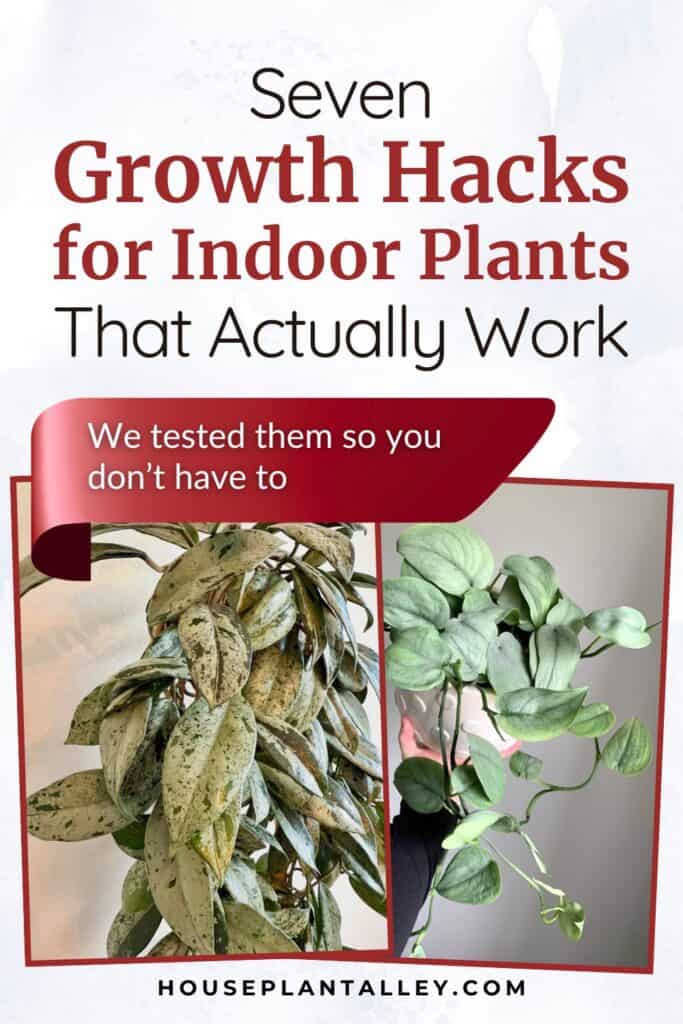
Contents
- 1 How To Make Indoor Plants Grow Faster in 7 Ways
- 2 How To Make Indoor Plants Produce Flowers
- 3 FAQs
- 4 What is the quickest plant to grow indoors?
- 5 Why is my indoor plant not growing?
- 6 What is the longest-lasting indoor plant?
- 7 What is the best indoor soil mixture?
- 8 What is the fastest way to add nutrients to soil?
- 9 Are crushed eggshells good for indoor plants?
- 10 Conclusion
How To Make Indoor Plants Grow Faster in 7 Ways
Increase Light Exposure
I’m sure you’ve heard that plants need light in order to grow. To ensure your indoor plants are getting the best chance at growing faster, you’ll want to increase their exposure to light. What’s most important is having additional light sources for them—natural light from windows and artificial lighting solutions when needed.
Natural sunlight is by far the best option for providing your indoor plants with the necessary energy. If possible, keep them close to a window where they can receive plenty of direct sunlight each day. You don’t have to worry about over-exposing them either; generally speaking, it’s hard to give too much natural light indoors! When weather prevents access to natural sun rays or during winter months when days are shorter, consider supplementing with some artificial lights like LED lamps or fluorescent bulbs so your plant will still get enough energy.
With proper lighting in place, you’re giving your indoor plants all the nutrients they need to flourish and help them reach their full potential! And remember: If the current placement of your plants isn’t maximizing their exposure to adequate light levels, don’t be afraid to move things around a bit until you find that sweet spot where both you and your greenery are happy!
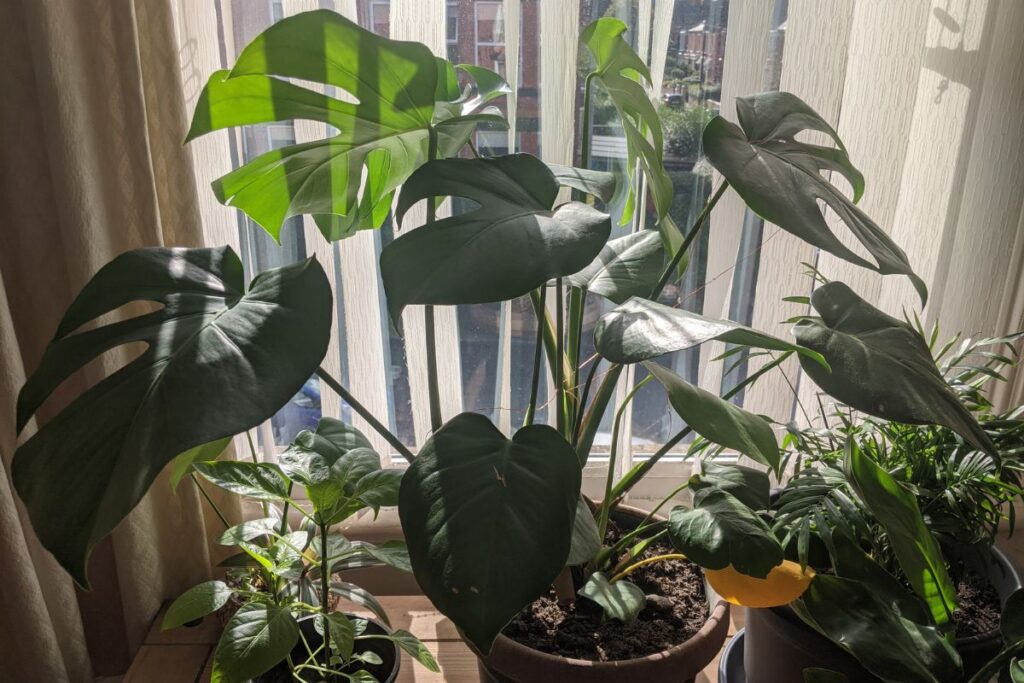
Provide Adequate Watering
Now that you have increased the light exposure for your indoor plants, it is essential to provide them with adequate watering. Developing a consistent watering schedule and understanding the quantity, frequency, and quality of water required for your specific plants are key factors in providing proper hydration.
When deciding on how much water to use each time you water your plants, keep in mind the moisture levels of the soil as well as the size and type of plant. Succulents or cacti require less frequent watering than flowering species such as roses or impatiens. The best way to tell when it’s time to water is by checking the soil’s dryness with your finger—if it feels slightly damp then there is no need to add additional liquid yet.
It’s also important to consider what kind of water you will be using. Tap water often contains minerals that can build up over time in potting mixes leading to saline soils and nutrient deficiencies within your plants; however, rainwater is pH neutral so would be recommended for ideal growing conditions. If tap water must be used, try leaving it out overnight before applying it to ensure any chlorine has evaporated off first.
By establishing an appropriate amount and frequency of watering along with ensuring good quality H2O is being used, your indoor plants should flourish into healthy specimens in no time!
Fertilize Plants Regularly
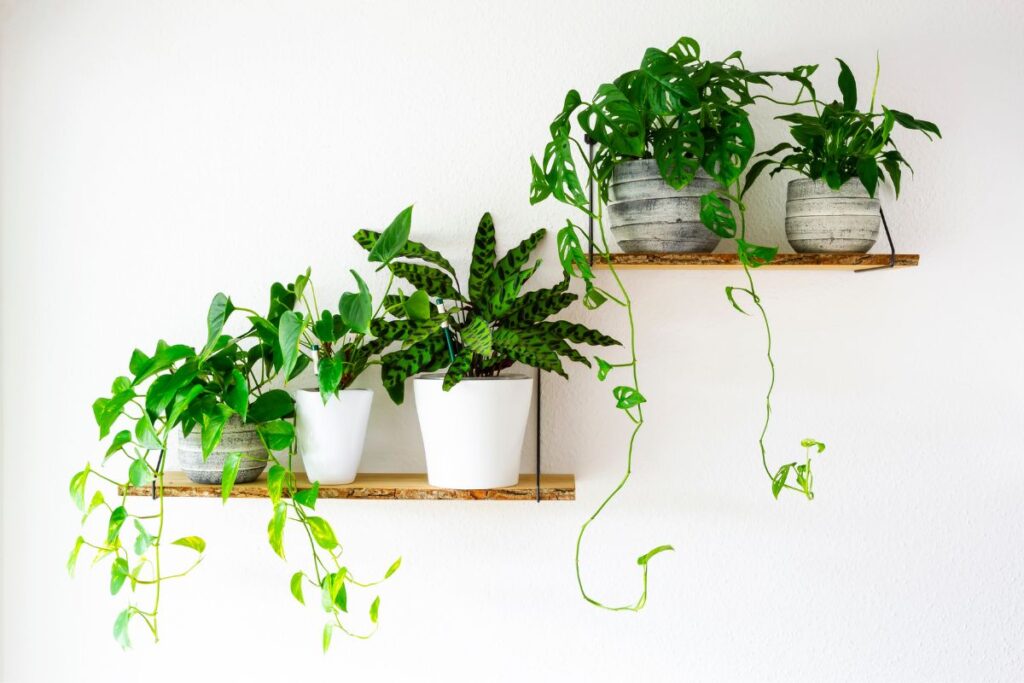
I’m sure we would all love to have our indoor plants grow faster. Fertilizing your houseplants is one of the best ways to help them on their way! When it comes to fertilizers, you want to make sure that you are using something specifically intended for indoor plants. An ideal fertilizer will contain nitrates, phosphates and other minerals essential for healthy growth. It’s important to pay attention to the dosage instructions on the packaging so that your plants don’t get too much or too little of any particular nutrient.
For organic-minded gardeners, there are plenty of options available such as liquid fish emulsion or even compost tea. For a more traditional approach, try slow-release pellets or granular mixes designed for indoor use. Whatever type of fertilizer you choose, be sure not to overdo it—a light application every four weeks should suffice in most cases.
So if you’re looking for ways to give your indoor plants some extra TLC and encourage faster growth, regular applications of plant food could be just what they need!
Repot If Necessary
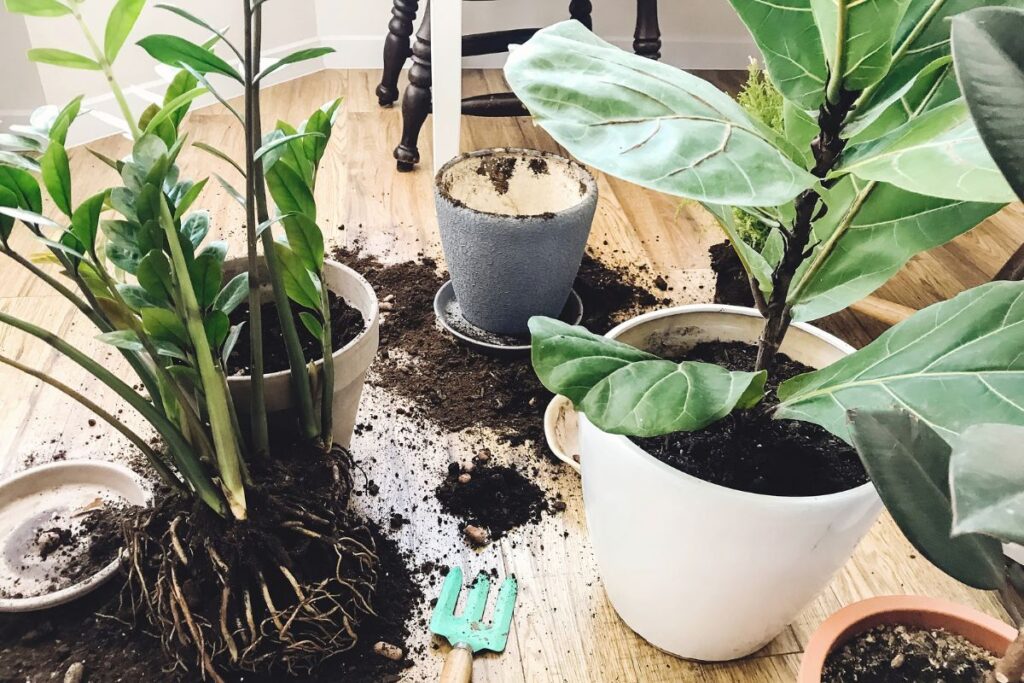
Once your plants have been regularly fertilized, you may need to repot them. Houseplants can become root-bound over time and will require a larger pot size in order to thrive. If the roots are beginning to peek out of the drainage holes on the bottom of the pot or if they’re becoming too tightly packed inside, it’s time for a change. I recommend container gardening with soil specifically designed for houseplants so that your plants get all the nutrients they need.
When choosing a new pot size, be sure to pick one just slightly bigger than the existing one as this will give your plant room to grow without overwhelming its roots. When transferring it into its new home, gently remove any old dirt from around its base. Then position it in the center of the pot and cover it completely with fresh potting soil before lightly pressing down around the edges of the soil line. Finally, water thoroughly until excess moisture is seen coming out through those same drainage holes at the bottom of the pot.
By following these simple steps when repotting indoor plants, you’ll ensure their continued growth and health well into maturity!
Prune To Encourage Growth
It’s important to prune your indoor plants in order to encourage faster growth. Pruning is the process of removing dead or diseased parts of a plant, as well as any branches that are overgrown. This will help stimulate new growth and keep your plants healthy. When pruning an indoor plant, it’s best to use sharp scissors or clippers so you can make precise cuts without damaging the plant.
You may also want to consider cutting back some overgrown stems and leaves on your indoor plants in order to promote healthier growth. Trimming away excess foliage will allow more light and air circulation around the base of the plant, which encourages vigorous growth. It’s also important to avoid pruning too much at once, as this could shock the plant and cause it to become unhealthy.
Finally, be sure to check for signs of disease before you start pruning any indoor plants. Diseases like root rot can spread quickly if not caught in time, so inspect regularly for spots or discoloration that could indicate a problem with your plant’s health. With these simple tips and techniques, you can ensure that your indoor plants grow stronger and healthier by encouraging them with regular pruning!
Provide The Right Temperature And Humidity
Now that you’ve pruned your indoor plants to help them grow, the next step is providing the right temperature and humidity. Temperature plays an important role in how fast a plant will grow, as too high or too low temperatures can be detrimental to its health. The best climate for most houseplants is between 70 – 85 degrees Fahrenheit. It’s also important to make sure humidity levels stay at the right level; this varies depending on the type of plant, but generally, you want it somewhere between 60-80%.
If you don’t have any way of controlling the climate inside your home, then getting a humidifier or dehumidifier may be necessary. You could also try grouping plants together so they create their own microclimate which helps keep moisture levels up and regulates temperature. If you live in a particularly dry area or during winter months when heating systems are running, it can really help to mist your plants regularly with water.
Finally, if all else fails and none of these strategies work for keeping your plants healthy, consider moving them further away from vents or windowsills where drastic changes in temperature might occur. Keeping your indoor plants happy at the right temperature and humidity will ensure they thrive and grow faster!
Suggested Reading:
30 Best Dehumidifying Plants For Bathrooms
Fight Pests And Diseases
It’s important to take pest and disease prevention seriously when caring for your indoor plants. Insects, bacteria and viruses can all cause harm if they are not taken care of properly. When it comes to pest control, it is essential to identify the type of insect that is causing damage before taking any action. Natural remedies such as neem oil or diatomaceous earth may be effective in eliminating pests without harsh chemicals.
When it comes to diseases, a little bit of preventative plant care goes a long way. Inspecting new plants for signs of infection prior to introducing them into an existing collection is key. Also, avoid over-watering your plants and make sure there is adequate air circulation around each one. Proper fertilization will also go a long way in keeping your plants healthy and free from disease.
In order for your indoor plants to grow faster, you must ensure their safety by engaging in regular pest control and disease prevention practices. Taking the time now to provide proper plant care will pay off later with vibrant, happy houseplants!
How To Make Indoor Plants Produce Flowers
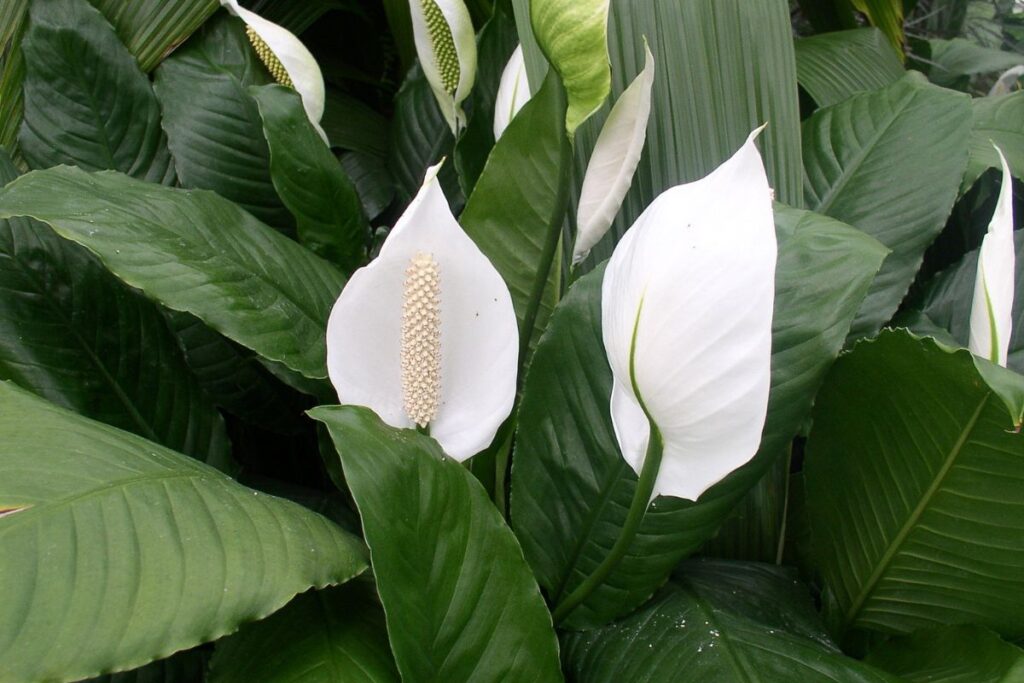
Now that you know how to make your indoor plants grow faster, let’s focus on getting them to produce flowers. Generally speaking, flowering plants require more care than non-flowering ones. Here are some tips and tricks for helping your indoor flower plants bloom:
- Provide proper lighting: Indoor plants require proper lighting to induce flowering. Consider placing your plant near a bright window or purchase a grow light to provide adequate light.
- Temperature: Some indoor plants require specific temperatures to initiate the flower blooming process. Check the ideal temperature range recommended for your plant species and make sure it is met.
- Nutrient balance: A well-balanced nutrient solution is crucial to support flower production. Make sure to provide your plant with fertilizers that are rich in phosphorus and potassium, which are essential nutrients for flowering.
- Pests and diseases: Make sure your plant is free from pests or diseases, as these can negatively impact flower production. Use organic pest control methods instead of harmful chemical products.
- Watering: Proper watering can help stimulate flower production. Water your plant at the right time and use optimal watering patterns depending on your plant species to avoid under or over-watering.
- Pruning: Regular pruning can help redirect the plant’s energy toward producing new buds and flowers instead of excessive growth.
- Stress: Some plants can be induced to flower by subjecting them to controlled stress. For example, you can limit water or light exposure for a short period, which can trick the plant into thinking it’s time to produce flowers.
Remember that not all indoor plants flower and some may require special conditions to do so. So make sure you research the requirements for your specific plant species to encourage flowering.
FAQs
What is the quickest plant to grow indoors?
If you’re looking for fast-growing indoor plants, you have a diverse range of options to choose from, including Pothos, Spider Plant, Bamboo, Velvet Plant, Ficus, Dumb Cane, Ferns, Cordyline, Peace Lily, Wandering Jew, Arrowhead Plant, and Creeping Inch Plant.
Pothos is one of the quickest indoor plants to grow, and it’s low-maintenance, making it perfect for beginners. It can grow several feet long in just a few months, and its trailing vine-like stems can grow new leaves at a rapid rate.
Spider plants are also fast-growing and can quickly produce new leaves almost every week when given the right conditions. They are also easy to care for and make excellent air purifiers.
Lucky Bamboo is a type of Bamboo that grows very quickly in ideal conditions. It is mostly a water plant, and the lucky bamboo variety, in particular, can grow up to three feet tall in just a few months.
Ficus plants are another fast-growing option that can add a touch of color and depth to any indoor space. These plants can grow several feet tall in a year and quickly develop new leaves in the right conditions.
Peace Lily is another quick-growing indoor plant that thrives in low light and humid conditions. It can take mere weeks for a peace lily to grow and produce new leaves that help purify the air and add a bright spot of greenery to your home.
While each plant has different optimal growing conditions, providing your plants with the right light, water, and nutrients is crucial to ensure their rapid growth. By choosing one of these fast-growing indoor plant species, you’ll be able to enjoy the beauty of lush greenery in your home in no time.
Why is my indoor plant not growing?
There are a variety of reasons why an indoor plant may not be growing. Underwatering is one of the most common reasons. If the soil is dry, the plant may not be receiving enough water to support healthy growth. Additionally, too much direct sunlight can cause leaf burn and stunt the growth of the plant. If a plant is in an area with too much sunlight, it may need to be moved to a spot with more shade.
What’s more, indoor plants may not be receiving enough nutrients from the soil. To ensure the plant has the nutrients it needs, consider adding a fertilizer specifically designed for indoor plants. Lastly, if the temperature is too cold, the plant may not be able to grow. Taking the time to observe and assess the environment of the plant can help identify the cause of the slow or stunted growth.
What is the longest-lasting indoor plant?
The longest-lasting indoor plant is typically the Peace Lily (Spathiphyllum). This low-maintenance plant is known for its long-lasting foliage and its beautiful white flowers. The Peace Lily is also known for its air purifying abilities, removing toxins from the air and cleaning the air of pollutants. It thrives in low-light conditions and can survive with minimal watering. It can even survive in semi-shaded areas.
The Peace Lily is one of the easiest plants to care for and can last for many years with proper care. It is an excellent choice for those who want a low-maintenance, long-lasting plant. To ensure the longevity of your Peace Lily, provide it with bright, indirect light, water when the soil is dry and fertilize it every two months. With these simple care instructions, your Peace Lily will thrive and bring a touch of nature into your home for many years.
What is the best indoor soil mixture?
The best indoor soil mixture will depend on the type of plants you are growing. For general houseplants, a good mixture would consist of quality potting soil, perlite, and peat moss. This mixture will provide excellent drainage, aeration, and moisture retention, making it an ideal choice for indoor plants. For succulents and cacti, a soil mixture with a higher sand content would be ideal, as this will provide better drainage. Additionally, adding some fertilizer to the soil can help boost plant growth.
When choosing an indoor soil mix, it’s important to look for a product that is free of weed seeds, disease, and chemicals. Organic options are preferred for those looking for an all-natural solution. Additionally, it’s best to choose a soil mix with a neutral pH that is suitable for the plants you are growing. Finally, it’s important to make sure the soil is well-aerated and has adequate drainage, as this will help ensure your plants stay healthy. With the right soil mix, indoor plants can thrive and bring life and color to your home.
What is the fastest way to add nutrients to soil?
The fastest way to add nutrients to the soil is by using fertilizer. Fertilizers are a blend of essential nutrients, such as nitrogen, phosphorus, and potassium, that can be quickly added to the soil. These essential nutrients are necessary for plant growth and development, and adding them to the soil can help to restore the soil’s fertility. Fertilizers can come in a variety of forms, including liquid, granular, and slow-release, so you can choose the best type for your soil and plants.
In addition to using fertilizer, composting is another effective way to add nutrients to the soil. Composting involves breaking down organic materials, such as leaves, grass clippings, and vegetable scraps, into a nutrient-rich soil amendment. Compost helps to improve soil fertility by adding beneficial microbes, improving water retention, and providing a slow release of nutrients. It can take several months to create compost, but it is a great way to naturally fertilize your soil.
Are crushed eggshells good for indoor plants?
Yes, crushed eggshells can be a great natural fertilizer for indoor plants. Not only do they provide calcium, which is essential for healthy plant growth, but they also help improve drainage and soil aeration. Eggshells can also help deter pests, like slugs and snails, because of their sharp edges.
It is important to note, however, that eggshells should not be added to your indoor plants all at once. Instead, start off with a small amount and add more as needed. When crushing the eggshells, it is best to use a mortar and pestle or a food processor to ensure they are finely ground. This will help them break down faster in the soil. Additionally, it is best to avoid using eggshells from eggs that have not been cooked, as these can contain bacteria that can be harmful to your plants.
Conclusion
In conclusion, taking the right steps to care for your indoor plants can help them grow faster and healthier. With proper light exposure, watering, fertilizing, repotting, pruning and temperature/humidity control you will be sure to have beautiful houseplants in no time. I highly suggest doing some research on each plant type before attempting any of these activities; as different species may require different levels or types of care. Finally, stay vigilant against pests and diseases that could harm your beloved greenery—it takes a bit more effort but is definitely worth the results.
With just a few simple steps, I am confident you will be able to make your indoor plants thrive! Whether you’re hoping for an abundance of leaves or flowers, these tips are guaranteed to get you closer to achieving your goal. So don’t hesitate—get out there and start growing those gorgeous houseplants today!
